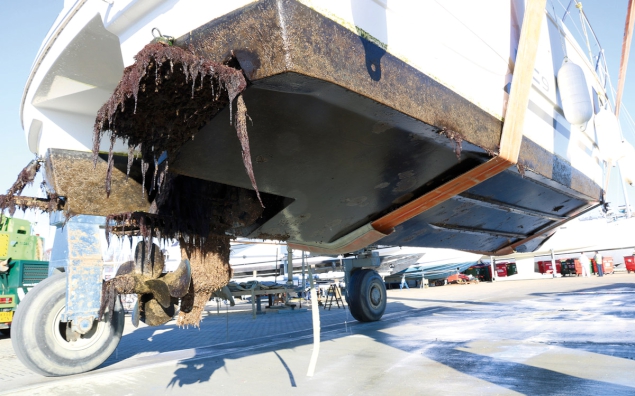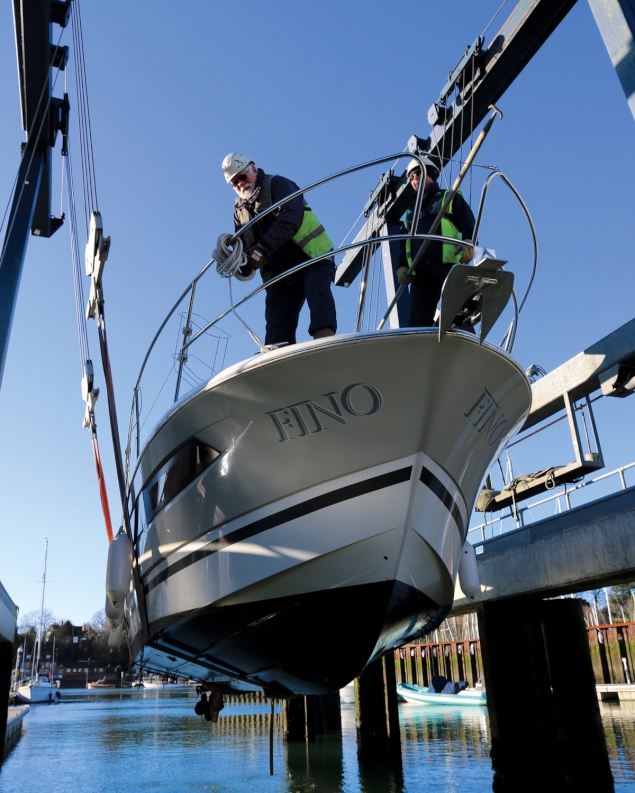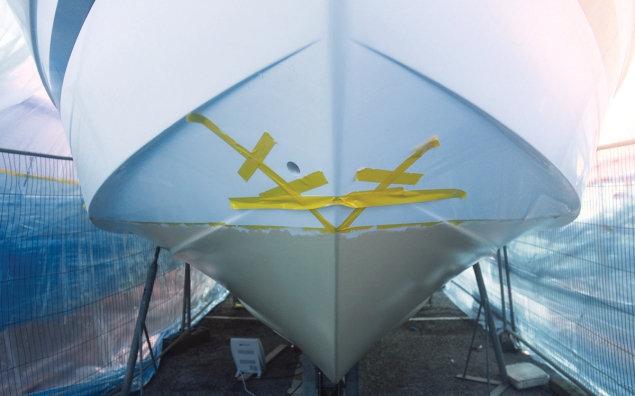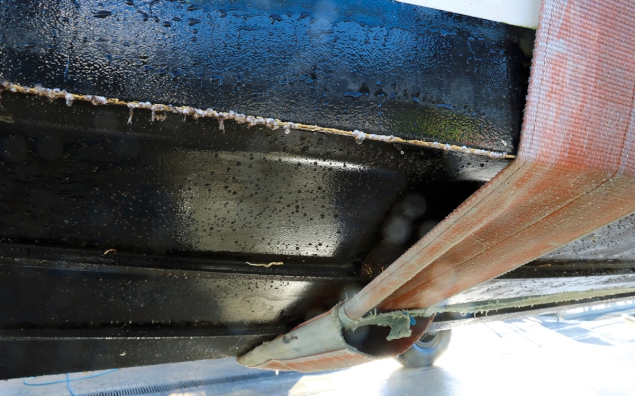A new fouling release proves a sound choice for Jeanneau NC9 owners Harry and Vicki Metcalfe
As with many more experienced boat owners Harry and Vikki Metcalfe decided to make the switch from sail to power when the appeal of beating into the wind at an angle for hours on end began to lose its appeal.
After years of cruising and racing a variety of sailing yachts around the Welsh coastline, they took advantage of their retirement to sell up and move to the south coast to be closer to family and friends.
Fresh start
A trip to the
Southampton Boat Show in September 2016 got them thinking about a suitable motor boat in which to get afloat again. After browsing the pontoons they settled on a Jeanneau NC9.
It was small enough to manage on their own but big enough to host larger parties on day trips around the Solent. The enclosed wheelhouse would be warm in all weathers and the single-level design would be easy for them to move around and safe for their young granddaughter to join them on board.
They struck a deal with Jeanneau dealer Burton Waters for delivery in December 2016 to a berth in Swanwick Marina, Hampshire. That just left one more thing to decide — what type of antifoul to go for.
Having spent far too many hours on their knees hand-rolling antifouling onto their previous boats they were determined to find a long-term solution that didn’t involve the hassle and expense of reapplying a fresh coat each season.
They were all set to go the Coppercoat route but before taking the plunge asked their son Ben, CEO of refit specialist Landau UK, whether there were any other long-term antifouling solutions they should consider. Ben had heard good reports about Hempel’s Silic One fouling release system but hadn’t yet had a chance to try it.
As the name suggests it uses a biocide-free silicone coating but with a special hydrogel polymer that forms a special surface with the same properties as water.
According to Hempel this not only ‘tricks’ organisms into thinking it’s not a solid surface but makes it extremely hard for anything to stick to it.
It isn’t marketed as a long-term antifouling but the brochure does say that it doesn’t necessarily need recoating every year provided the boat doesn’t spend more than a month out of the water.
Harry and Vikki were sceptical but agreed to give it a go. “It sounded too good to be true,” admits Harry. “But Ben seemed confident it would work and was keen to use our boat as a guinea pig.”
The application process was a little more complex than normal as it requires a special tie coat in addition to the usual two coats of primer and Silic One. And because it has to be completed in quite a specific time, temperature and humidity window, Landau had to use a tent and heaters to meet the parameters. Harry describes the finished result as, “very smooth and surprisingly tough.”
Year one results
After a full and reasonably busy first season their boat was lifted in September 2017. Other than the usual slime and a small amount of growth along the edges of the spray rails and chines the hull was almost completely free of fouling.
This was all the more remarkable when compared to the state of the uncoated sterndrive and trim tabs both of which were sporting lengthy beards of weed, sea squirts and barnacles.
After a thorough spray down, the boat was returned to the water well within the one-month window. And there it stayed for a further 15 months, this time with relatively little use even during the long hot summer of 2018 due to a health scare.
As Harry points out this proved as much of a challenge for the Silic One as it did for him. Being left static for long periods is the sternest possible test for antifouling, especially one that relies on water movement to help remove any nascent growth.
Year two results
When their boat was finally lifted in January this year MBY was there to witness it. Sure enough it was a similar story, with long trails of weed hanging off the trim tabs and a thick crust of barnacles on the sterndrive.
There was only a thin coating of slime on the hull sides and almost nothing on the underside, except for where the hull had been blocked off during the initial application.
The slime wiped off with a tissue and even the occasional calcified tubeworm could be dislodged with nothing more than a thumbnail. After the usual spray down, with the pressure washer kept at a safe distance to avoid stripping off the top surface, it looked as good as new again with water droplets instantly beading and running off the hydrogel surface.
Harry wanted to fill in the gaps where the blocks had been and touch up one or two small areas of wear along the chine edges, but there was no question of it needing a full recoat for at least another year.
“We are amazed how well it has worked, particularly since this is the second full season,” said Harry. “Our only mistake was not coating the sterndrive and trim tabs too.” Unlike most copper-based antifoulings, which react with metal surfaces, Silic One can be used on alloy sterndrives as well as GRP hulls.
Admittedly, it’s only one test of one boat in one UK location but with ever-tighter restrictions on the use of conventional biocide antifoulings it looks as if Silic One really does offer an effective alternative for a barnacle-free future.









